|
Money is a necessary commodity in our lives, but it's a difficult concept for many children to understand. Because we are living in a plastic world, children don't always get to see and handle real money anymore. This makes it even more difficult for them to understand how to handle it and use it correctly. It is up to us as teachers to help them understand the importance of money and how to count it, earn it, pay for things with it, and make change when needed. This can be a daunting task unless we use concrete examples and situations. Recognizing Coins And Their ValuesRecognizing coins and understanding their values is one of the first things that needs to be taught. There are many different resources available for doing this, but it's important to make sure that kids get to actually see and handle the coins or play money that looks like the coins as they practice identifying them and stating their values. In Canada, we use the terms penny, nickel, dime, and quarter for the smaller values. It's amazing how many kids don't know which are which. I get questions like, "Is that the beaver, or the sailboat?" They examine the coins looking for clues as to how much each is worth. I suspect it is the same with kids in The United States. They may have different symbols on the coins, but the confusion still happens. Resources for identifying and counting moneyHere are some resources I created to help kids identify different coins and bills, recognize their values, and count money. There are Canadian and American versions as well as Boom cards versions for those wanting digital resources. It's important to make sure that these resources are used with many different hands on opportunities to manipulate the money and look at it closely so that the connection can be made to the abstract examples of images and questions. Resources for applying the skillsApplying the skills of counting, earning, and spending money is a necessary part of learning to handle money. I have created some resources to practice doing this. Note: Café Élisa is in French. Learning about debit cards and moneyBecause we live in a world of plastic currency, it's important to make sure children understand that money is still exchanging hands and there must be money available in order to use the debit card. I created this unit to help kids better understand this and to provide opportunities for them to earn money and keep track of what was going in and out of their bank accounts. Other money mattersCredit cards are another type of spending that adults use, but I didn't address this specifically with my students. It's a much bigger deal to explain debt and should be dealt with, but I feel it's best done in detail as kids get older. Taxes are another part of money skills that needs to be addressed. This will require separate instruction to better understand how to calculate it and allow for an extra cost when calculating what money is needed to purchase things. There's nothing worse than getting to the checkout and discovering you are short of money because of the added taxes. Kids need to be exposed to this in teaching about money so that they aren't disappointed when they go to buy something and don't have enough money. I have not specifically addressed this in any of my resources, but it's a necessary element to at least mention to younger children when teaching about spending money. Even in a mostly electronic economy, it's important to be able to handle actual money for situations where cash is needed. Hopefully some of these resources will help with preparing your students for the monetary world out there. Check out some of my money bundles for more resources and extra savings. Related PostsDo your students know much about money and how to count it, earn it, or use it for spending? Can they make change? Do they realize that they have to have money in the bank in order to use a bank card? All of these actions are necessary if they are to be able to handle money responsibly in life. I recently worked with some students in grades 4 and 5 who had great difficulty with identifying coins, counting money, and making change. It was important to start at the beginning and work through different skills one at a time to help them understand how money worked. A few years ago, there was a Young Entrepreneurs event at our school. The grade 6 classes created items for sale and they learned all about creating a budget, purchasing materials, determining prices to earn a profit, and how to work with money. When I saw this in action, I decided to try a modified event with my grade 3 class. We created items for sale and we did a Spring Fundraiser for a special field trip. This took a lot of preparation, but it was a huge success. Check out more here. In order to make sure my students understood how money worked and how to handle it, we worked together and created this unit. I created the main outline and framework, and then added touches and refined it as we worked through the different lessons. I was amazed at how much they learned and how well they were able to work with money as a result. Part of the process included understanding how to handle money in a variety of situations. I created a bunch of scenarios for counting money, making change, earning money, spending money, and saving money. This led to the creation of Kid Themed Money Word Problems. I have used these task cards a few times since and every time they have helped kids to make connections that help them understand how money works. If you are looking for ways to help your students better understand how money works and how to use it effectively, check out these two resources. They work! Next time I will share some other ideas and resources for working with money. Related PostsDo your students struggle to make sense out of math? Do they grumble and get frustrated whenever it is time for math? Maybe they just need to have more practice manipulating things and visualizing concepts. Using concrete materials and hands on activities is the best way, in my opinion, to help kids make sense out of the math concepts they are being taught. However, at some point they need to be able to move from the concrete to the abstract. Here are a few ideas that combine both as they move towards that transition. Basic FactsWhen we talk about basic facts, we usually mean addition and subtraction facts of single digit numbers. These are the foundation for all other addition and subtraction problems and they are also the base for multiplication and division. If kids are to make sense and be successful with more complex situations, they need to have a good handle on their basic facts. Start out by using objects and combining them for addition and removing some for subtraction. As these steps are practiced, try using words like adding and plus or taking away and minus so that when the number sentences are used, they will be familiar with the language. When the number sentences are added, make sure to have an image of the objects there as well so the correlation between the concrete and abstract is visible. Fact Families and Number BondsFact family triangles help kids to see the relationship between addition and subtraction and the separate elements. Number bonds are another way of representing this. Try using objects and breaking them down into the different sets so that they can actually count and check to see that the addition and subtraction sentences work. Here are some resources that I created to practice using fact family triangles and number bonds. Click on the images to check them out. Representing Numbers And Place ValueOnce kids are able to recognize numbers up to ten, it is time to start looking more closely at numbers with two or more digits. They may be able to count past ten and even up to one hundred, but do they really understand what the digits in the numbers mean when they look at them? In most cases, they think of a number such as 324 to be a 3, a 2, and a 4. They hear three hundred twenty-four when they say the number out loud, but they don't really understand that it is 300 plus 20 plus 4. There are several ways to help them figure this out. Here are a couple of ways that I like to use. Base Ten BlocksBase ten blocks allow kids to manipulate objects to show different numbers. They can touch the hundreds, tens, and ones as they count them and move them around. Once they can accurately create numbers using the blocks, they can draw them using large squares for hundreds, rectangles for tens, and small squares for ones. Expanded NotationExpanded notation stretches the number out so that each of the digits is represented with its value. For example: 523 is really 500+20+3. Start out using the base ten blocks to show what it looks like before moving to the abstract addition sentence. Practice saying different numbers and then representing them with the base ten blocks. Once they can show the number correctly each time, add in the written component. Draw a picture of the number using base ten symbols and write the expanded addition sentence under it. Once they get comfortable with recognizing the standard notation and representing it with base ten blocks and expanded notation, matching the 3 different formats can be added. Here is a resource I created that does that. It also has a bingo component. Click on the images to see more. Check out the video below for an explanation about how to use this resource to help kids understand ways to represent numbers. Another way to show numbers with their actual values is to make card stock strips with 100,200,300,400,500,600,700,800,900 on them, and shorter ones with 10,20,30,40,50,60,70,80,90 on them, and shorter ones with 1,2,3,4,5,6,7,8,9 on them. Hand out the strips to the kids and have them show the actual numbers by standing together with the correctly numbered strips. For example: 362 is the number. The kids with 300, 60, and 2 would stand together to show that they make the number 362. They could also overlap their strips to show the standard notation number. if you would like some worksheets to practice representing numbers in a variety of ways, check out my place value category in my store. There you will find sets for different holidays and seasons. I have also created a sample set that is free for signing up for my newsletter.. These are only a few ideas for using hands on activities to help make sense of math concepts. Moving to the abstract will be an easy transition for some, but will be difficult for others. If necessary, add in concrete activities along the way to help kids see the relationships and apply concepts to other activities. Next time I will share some addition tips and strategies. Related PostsHow Has Money Use Changed?Once the pandemic hit, the way we used money also changed. Because of the fear of spreading the virus through touching things, we started to use debit machines and e-transfers instead of cash for most of our transactions. This is not really a surprise, because even prior to the pandemic in many places people used plastic rather than carrying around cash. One of the problems with using debit cards and credit cards for most transactions, is that kids are not being exposed to cash and its use. Now that things have eased up with the pandemic, cash is being used again. This means that it still needs to be taught so that kids learn how to handle it and use it. We need to help prepare them for using it in the real world. Learning The Value Of CoinsSometimes young children think that the number of coins they have is worth more than the actual value of the coins. For instance, a handful of nickels is often worth less than a few quarters. Understanding the value of coins is important. Counting coins is a great way to better understand how groups of coins work. They learn how many coins are needed to make a dollar. They can also learn about groupings of coins for specific amounts. Making 5 groups of 10 for dimes, 10 groups of 4 for quarters, groups of 20 for nickels, and 5 groups of 10 for pennies helps them to understand how many coins are needed for rolls. From there, kids learn that a roll of pennies is 50¢, a roll of nickels is $2.00, a roll of dimes is $5.00 and a roll of quarters is $10.00. Note: In Canada we no longer use the penny, but it is still a good practice to count them because we sometimes we have American pennies or use them when traveling to the States. Larger denominations can also be counted. In Canada, we have loonies and toonies, but in United States they have dollar bills. Both countries have larger bills such as five, ten, twenty, fifty, hundred. It is important for kids to learn about these larger amounts as well. Money Resources To HelpI have created many different resources for identifying and working with coins and bills in both USD and CDN versions. These are helpful for practicing how money works, but hands-on activities are also important. Creating situations where they can buy and sell things is a a great way to practice using money. My students loved using the school play money and getting the bigger bills for transactions. Games like Monopoly are still very popular today and kids love being able to handle the larger amounts of money as they buy property and collect rent. If you are looking for a complete unit that includes many different aspects of earning money, saving money, spending money and life skills for using money, check out this unit that I created with my grade 3 class. It turned out to be far more successful than I could have imagined when I started it. Kids need to understand money if they are going to be successful with using money in the real world. Check out my related posts below for more information about how kids can be taught to use money in real world situations. Related PostsResearch Activities Made To Help Younger Kids Learn About CanadaLearning about the country you live in and the flags and symbols associated with that country can be fun, but also tricky if you have trouble memorizing things. Using games and activities that are hands on will help with making the connections. These are especially helpful for those who need visual clues. I created a couple of games and task card activities to help with learning about Canada for my students. These were very helpful and they were engaging, so the kids found it easier to learn the material. They also had fun playing so they were more involved in their learning. They were a good supplement for Canada studies of the symbols and the research project was helpful for learning in more depth. Because I was working with a French Immersion class and also tutoring students in French, I decided to create a French version of some of the resources. I then gave them to the teachers to use with their classes. I also created a bundle of booklets for doing research on the provinces and territories. These booklets were created with younger children in mind because many research materials are very difficult for them to read and understand. These booklets use maps and pictures of important information and interesting facts to supplement the written information. Here are a couple of comments from those who have purchased this bundle. "The booklets were well put together and simple enough for my students who have trouble reading. They are a great way to round out the lesson and encourage reading them at home to their parents." "Really impressed with the high quality colour images and how effectively it portrays each province and territory. It was very beneficial for the class I was teaching. Thank you!" As with the symbols, I created a French version of these booklets. This set I gave to my grandson's teacher to try out. Here are some comments I received from buyers. "Finally I have a resource to support social studies in grade 4 extended French in Ontario students! Bravo! " "Love these! Beautiful pictures and information at an appropriate reading level!" I decided to make a resource to help practice matching the symbols to the different provinces and territories. It is one thing to research and record what the symbols are, but quite a different thing to remember which symbols go with which province or territory. This task card matching set is for the flags and symbols of the provinces and territories. It is a great way to reinforce the information. It is a match up game that fits well with the small booklet from my Canada My Country series. I have also created the activity in French to go along with my Canada Mon Pays series. You can check them out by clicking on the images below.. This is not as easy as you may think. How many times have you memorized material for a test only to forget it later on? It has been quite a while since I looked at the different symbols of the provinces and territories. When I tried to do it by memory, I did make a couple of mistakes the first time through. Once I looked at the booklet and refreshed my memory, it was not difficult to complete correctly. The key was to look for things in the images or on the flag that would help me out. For example, the Saskatchewan flag has the flower on it, so that was a clue. I knew that the loon was on the dollar coin, so that made me think of Canada and Ontario because that is where Canada's capital is. These are only a couple of examples of how I made some connections. Everyone will have their own way of making connections, but if we give kids a couple of examples to go by, they may be able to come up with some clues of their own to help them out. Versatility is important when creating resources, so I made it possible to print these cards in two different sizes. The full size cards are large enough to use in group settings or if you would like to put them in a pocket chart or on the board for kids to sort. You could add small magnets to the back of the cards so they are easily moved around. The smaller size is great for when you want kids to work in centers or individually as they take up less space. These are printed as 2 pages on one sheet. In order to make this more accessible, it may be necessary to do only one symbol at a time for some kids. This is also possible. You could focus just on the flags, birds, flowers, trees, or even the names of the different provinces and territories. You decide based on what works best for your kids. If you are focusing on one province or territory, you can use the cards to talk about the appropriate symbols for that province or territory. Then you could add to that as you move on to a different province or territory. Only choose a few areas at a time. There are many different ways to play match up. Here are a couple of ideas. You can do them by matching up the different symbols with the help of the booklet. You can do a match up like memory by turning over a few cards at a time and deciding where to place them. I have also created different bundle combinations for those wishing to have more options. With or without the booklets and with both English and French versions. Click on the images to check them out. I hope these resources for Canada's symbols and the provinces and territories symbols along with the booklets will help to provide materials that help young children with their research of Canada. Related PostsHelping kids expand their vocabularyAre you looking for ways to help kids with writing and sharing their ideas? This seems to be a common issue with younger children as they begin to share their ideas, but they don't have the words yet to describe things in detail. Instead, they tend to use the same few words over and over. We sometimes refer to these as "worn out words". How to develop a rich vocabulary baseDeveloping a rich vocabulary base helps with writing and expressing ideas and it also allows kids to create more detailed and creative stories. There are many different ways to expand the vocabulary. Here are a few. Brainstorm as a classChoose some of the worn out words, such as nice, good, happy, fun and come up with a list of words that can be used instead. Try a thesaurusYounger children might find this a bit challenging, but they can still give it a try. A thesaurus will provide many synonyms for words. Do a vocabulary challengeTake a simple sentence and challenge the class to come up with different variations that make the sentence more interesting but still maintain the meaning. Then share the sentences with others. Create a themed word wallSometimes kids just need words that fit the various themes. They can help them to get their stories started or provide some extra ideas to expand their stories. A themed word wall can be changed as different themes are explored. If you don't want to devote space to an actual word wall, you can store the words on rings and allow the students to take them as needed to use. Use word games and activities to review vocabularyIt is important to make sure that the kids get lots of exposure to the words they need for various writing tasks. This ensures that the words become part of their working vocabulary. Then they will be able to access them more readily in future literacy situations. I find that word games and activities work well for working with vocabulary words as they are engaging and fun. Kids learn without realizing they are actually studying the words and phrases. The more they play, the faster they begin to recognize the words. Sight word games, silly sentences, I Have, Who Has? games, and task cards for matching games are a few examples that have worked well for me over the years. I created many of these games for literacy centers and they were always very popular. Using the same types of formats helps the children to focus on the content rather than how to play the games. Just change up the themes and let them play. Here are some vocabulary word sets I created for the seasons and special days. I hope to be able to add to the special days in the future. There are sets of I Have, Who Has? cards for each of the seasons and special days as well. If you are teaching French, check out the French versions. My students loved making silly sentences, so I created several themed sets for them. They enjoyed making the sentences and practiced parts of speech at the same time. As an extension activity, we would sometimes take the words and illustrate them and then put them into a flip book of silly sentences. You can check out my special days parts of speech silly sentences here. If you would like to try out a free vocabulary activity, sign up for my newsletter. I am offering my I Have, Who Has? Christmas set to my followers for free. There you have some ideas for expanding and developing a broader vocabulary base for your students. I hope they work well for you. I would love to hear what other ways you use themed vocabulary in your classroom. Let me know in the comments. Related PostsGetting back into the swing of thingsSummer break is over. School is back in session! For some, you have already been in session for a few weeks. For others, this is your last weekend of break. The question on many teachers' minds is "What will this year bring?" Some kids are excited, some are anxious, some are disinterested, and some are unhappy. There are so many emotions during the regular return to school, but with the uncertainty and constant changes last year as we navigated through the unknowns of the pandemic, some emotions escalated. Many kids experienced more anxiety, confusion, and frustration as they tried to learn in new environments and situations, many parents experienced anxiety and frustration as they navigated online and at home instruction, and teachers experienced anxiety, uncertainty, frustration, and burnout as they tried to balance in person, online, and hybrid teaching situations. There was hope that we would be closer to a more normal school year, but things are still changing and we need to be ready to change gears at any moment. This uncertainty is causing teachers stress even before school begins. Many of my teacher friends are still waiting to find out what grade level they are teaching, how many students they will have, and even where they will be teaching. Primary teachers ready to go kitIt is important to have some things ready for any situation to help get through the transitions of the first weeks. You might call it a survival kit. This kit would need activities for various grades, subjects, and configurations of students. The question is, what should be in this kit? Here are some ideas for primary grades. (Some could be modified for intermediate classes, but since most of my teaching was in primary, I have decided to focus on that level for this sample.) Literacy ideas that are ready to goHere are some literacy activities that will engage and provide reading and writing practice for your students. Selections are from various free and paid products. The full products are listed below. Refreshing Idioms Task Cards (sample from the full product) 5 Senses Stories Story Board Fun (activity from Back To School Math And Literacy Ideas) Summer Parts Of Speech (one set of cards from the package) Fall/Autumn Parts Of Speech (one set of cards from the package) Find The Evidence (sample pages) Soundo (part of Alphabet Game Boards) Vocabulary Mandalas (one mandala) Basic Vocabulary Activities ( activities from the product) Quick and fun math activitiesHere are some fun math activities to help your students work on basic math skills. Selections are from various free and paid products. The full products are listed below. Ipad Glyphs (sample from the full product) Pumpkin Glyphs (sample from the full product) Measure Up! (activity from Welcome Back To School) Summer Sports Activity Bundle (activity from the bundle) Measurement Games Team Events ( one event from the games) Number Mandalas Addition and Subtraction ( one of the mandalas) Literacy and Math Game Cards (2 game cards) Science fun and experimentsThese science activities will keep kids entertained while learning about science facts. Selections are from various free and paid products. The full products are listed below. Amazing Weather Facts Posters (freebie) Are You A Rectangle Or A Square (freebie) String Telephones The Clink-Clunk Test Team building activitiesTeam building is important at the beginning of the year, but also throughout the year. Here are some activities that can be done in groups or with partners. Back to School Ice Breaker (freebie) Escape Room What Am I? Vocabulary activity (one activity from the set) Find Someone Who (activity from Back To School First Week Activities) Stumpers (activity from Back To School First Week Activities) What Am I? (sample pages from What Am I?) Self esteem activitiesMaking sure that children understand that they are valuable and important will help to develop positive self esteem. Here are some activities that will help with this. Paying It Forward (freebie) Optimist or Pessimist Task Cards (one set of cards) Goal Setting And Reflections (freebie) Brain breaks and active gamesHere are some active classroom games that can be played as brain breaks or in the gym or outside to provide movement and stimulation between other subject activities. Each of these areas is available as a separate package, or you can get the whole bundle to keep on hand for activities to use throughout the year. It will be helpful when you need to prepare for substitute teacher on short notice or if you just need a quick activity to use. You can find the kit here. As I indicated, this is just a sample of some of the things that could be done. It will be up to you to add your own creativity, experience, and preference to your ready to go kit. For more ideas and resources, you can check out the various categories in my TeachersPayTeachers store. If you are looking for back to school resources, you can check out my recent blog post for resources and tips. I wish you all the best as you venture into a new school year. Note: This resource has been updated and more resources have been added to it. For free resources, tips, and ideas, sign up for my newsletter.
What is Figurative Language?Have you ever been told to "get your head out of the clouds"? How about "hold your horses"? Can you just imagine what a person who is new to the English language must be thinking when they hear these expressions? I really didn't think too much about it until I had a student in my class who was a very literal thinker. I had no idea just how many different times during the day we used figurative language in the classroom. We are so accustomed to it, that we don't even realize that we are using it. There are several types of figurative language. Today I am going to focus on idioms and some fun figurative language activities for kids. What is an idiom?According to the dictionary, an idiom is an expression that cannot be understood from the meanings of its separate words but that has a separate meaning of its own. For example: when we say that someone has "ants in their pants" we don't really mean that they have ants crawling around in their pants. Instead, we are referring to them being wiggly and having trouble sitting still. Here are a few other common idioms: full of beans sick as a dog a dime a dozen back to the drawing board once in a blue moon spill the beans down to the wire in hot water play it by ear raining cats and dogs in a pickle There are many more, but I think you get the idea. My daughter-in-law is Korean, and when she moved to Canada, she was often confused by the expressions we used. She would ask me what I meant when I said something that didn't fit with what the words said. This made me more aware of what I was saying. She has been here for six years now, so she is comfortable with the way we talk and often uses figurative language herself. Back to the student I had who was a literal thinker. I introduced him and my class to the Amelia Bedelia books. The author, Peggy Parish, had a wonderful way of helping us understand how much we use expressions when speaking. The character Amelia Bedelia did everything as literally said which led to some very comical situations. The children loved the way she reacted and they found it amusing to see how she would behave in each situation. My literal student began to understand that sometimes when we say something, it might have a different meaning than the words used. Fun Figurative Language Activities Using IdiomsHere are some activities that worked well with my students. You might like to try them with yours. 1. Create an idiom booklet Out of this situation, a new activity was born. We began a study on idioms and started to collect a list of expressions that we found in the books and in our daily conversations. Our goal was to come up with 100 since hundreds day was coming up soon. Needless to say, we could barely get a word out without someone saying "idiom". It was fun for the class, but it also had the potential to distract us from other things we were working on. We had to start making some guidelines to keep it in check. Once we had our expressions, we decided to do some activities with them. We created a class idiom booklet and each person was given 4 or 5 idioms to illustrate for the booklet. This booklet was a favourite for free reading time and barely lasted throughout the year because of its popularity. 2. Use Idiom task cards for a center activity I created some idiom task card games that we were able to play in small groups or as center activities. I used the theme of turning lemons into lemonade for these cards. You can check them out here. The following year, I created another set of task cards. It is called Figurative Language Task Cards. You can check it out here. 3. Use Amelia Bedelia stories to study figurative language The Amelia Bedelia series of books was very popular with all my students. Herman Parish, a nephew of Peggy Parish, continued her legacy with Amelia Bedelia and wrote some simple readers and some chapter books about Amelia's childhood. These books provided me with enough differentiated material on the same character for everyone in my class to read. We were able to study the characters, learn about idioms, and work on our reading skills at the same time. 4. Try out this activity for Good Work, Amelia Bedelia When I retired, I continued to work with small reading groups at my school. I found that the Amelia Bedelia books were still a good fit for some of the guided reading groups I was working with. I created an activity to go along with the Good Work, Amelia Bedelia book to use here. If you would like to find out more or get your own copy, check it out here. 5. What does the idiom mean? I have been thinking a lot about language lately, and I decided to create another idiom activity. It includes 39 different idioms with 10 of them that have two different images, so 49 pages in all. I have also created a small sampler of it that you can get here by clicking on the image. So there you have a few ideas for using idioms in your classroom. I hope your students have as much fun as mine did. Don't forget to grab your free sampler of idioms here. I would love to know more about how you use idioms in your classroom. Related postsKids love to play with blocks, build structures, and experiment. 2D and 3D geometric shapes and solids activities are perfect for this kind of experimentation. They allow for creativity while also teaching important skills and information about how they can be used. What are 2D shapes?2D shapes are closed figures that are flat surfaces that may have edges and points (vertices). A circle doesn't have vertices, but it does have a flat surface and it is a closed shape. Although pattern blocks are not really 2D, we often use them in activities that are 2D and we refer to them as 2D shapes. Kids love to use these blocks to create patterns and then count the number of each shape used. Some of the most common shapes are circles, squares, rectangles, triangles, and trapezoids. It is fun to learn about the different shapes and also how to identify them in our environment. What are 3D solids?3D solids are closed figures like the 2D shapes with flat surfaces that may have edges and points (vertices) but they have another dimension, height. A sphere is an exception because it doesn’t have any flat surfaces or edges or points, but it has a curved surface and depth. A cone has edges, a flat surface, a curved surface, and a point (vertex). Because of the different combinations of edges, vertices, and curved surfaces or flat surfaces, the characteristics are different from those of the 2D shapes. Some solids can roll, some can slide, and some can do both. Some common 3D solids are spheres, cones, cubes, prisms, pyramids, and cylinders. Here are some posters that give the attributes or characteristics for some 3D solids. How characteristics affect creating structuresIt is always fun to try out different objects to see if they roll, slide, or do both. Also, how many times have you tried to balance something on the point of a cone or pyramid? Depending on the shapes, different structures can be created. Here is a resource I created that tests out some of these things. Sampler activities and other resources for geometryI have created a geometry scavenger hunt activity and a sampler bingo game for you. You can get your free copy here. Our environment is made up of many different shapes and solids. It is fun to try to identify the different shapes or solids that are around us. There are many opportunities to explore and learn about geometry around us. Check out some more ideas here. For more practice with the different 2D shapes and 3D solids, check out my geometry category in my TeachersPayTeachers store. I also have some resources for those who are doing distance teaching and require online resources. So there you have some ideas, activities, and resources to help your students explore 2D and 3D geometry and have fun along the way. I would love to know if you have any other favorite activities that you enjoy doing when teaching geometry. Don't forget to grab your free copy of the scavenger hunt and bingo sampler here.
Canada is a big country with many different provinces and territories with special places and activities that make them unique. Learning about the many cultures and interesting facts can be fun, but depending on the resources and activities, it can also be difficult for some children. Informational text and reference materials often use much more technical language than some children are used to and this makes it hard for emergent readers to handle. That doesn't mean they can't do the job, but it does mean that they may need some extra support and resources that are less difficult to read. Provinces And Territories BookletsI have created a series of books about the provinces and territories in Canada that are suited for doing basic research and usable by students in late primary and early intermediate grades. They were created to help those who were overwhelmed with reference materials. French is Canada's second language, and French Immersion is taught in many places. It is also the main language in some places on the east coast of Canada. I have created these materials in both English and French for this reason. Here is a video preview from one of the books in the series. Click on the image to view it. More Canadian ResourcesI have also created other materials for working with symbols of Canada. Here is a bingo game that I created. It has 6 different boards and is available in English and French. These 24 symbols represent Canada from coast to coast. There is one card that has the words with the symbols as well. I have created separate vocabulary cards as well that can be used for various activities. I Have, Who Has? games are fun and help kids focus on both images and vocabulary. These task cards are 24 symbols of Canada. They are a great supplementary activity for your Canada unit. If you are looking for some cute number cards for calendars or other activities, here are some with Canadian kids and some with Canadian animals. If you are looking for a more in-depth study of Canada, check out my Canadian Social Studies section to find more materials. Here is one project in the section. Well, there you have it. If you are looking for some resources for your late primary/early intermediate classroom check these out. Have fun studying Canada with your students.
|
About Me Charlene Sequeira
I am a wife, mother of 4, grandmother of 9, and a retired primary and music teacher. I love working with kids and continue to volunteer at school and teach ukulele. Categories
All
|




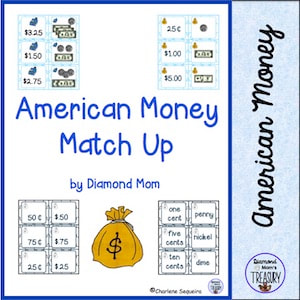


















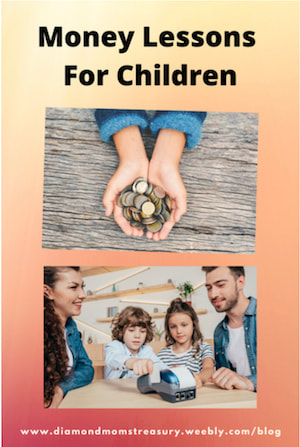


















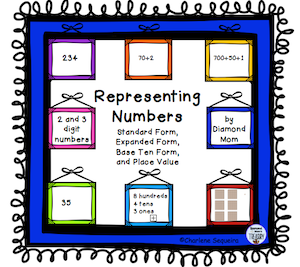

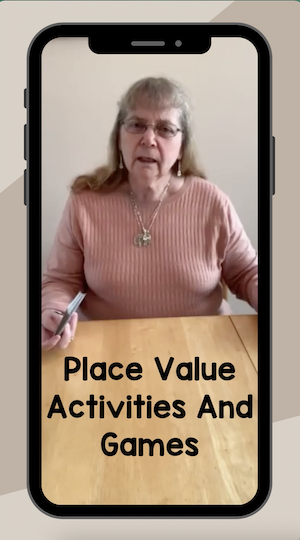
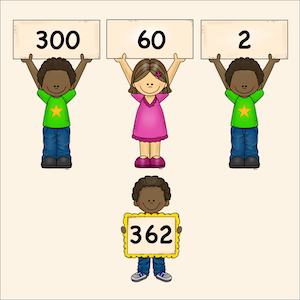




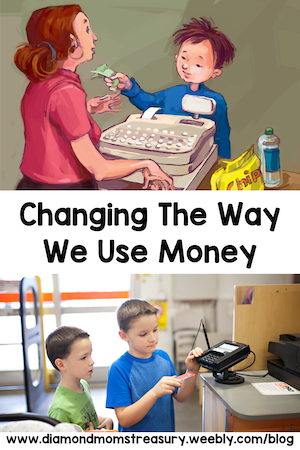












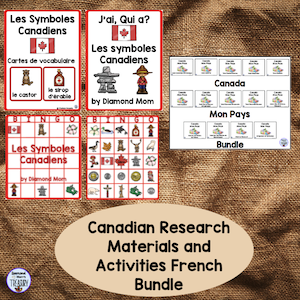





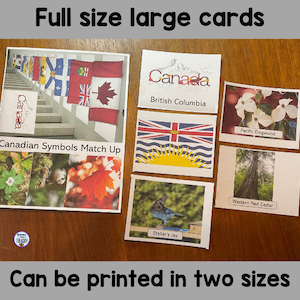

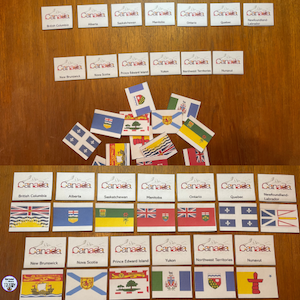

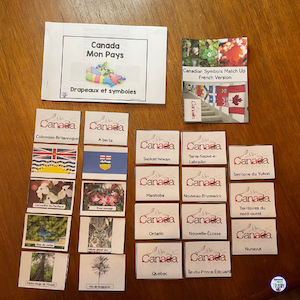







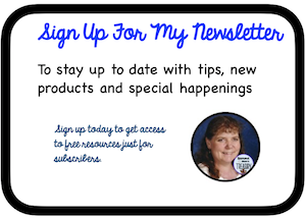






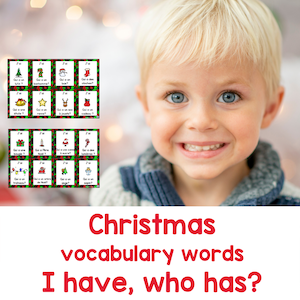







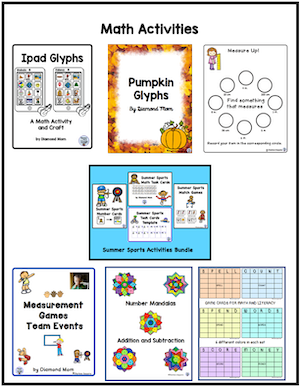
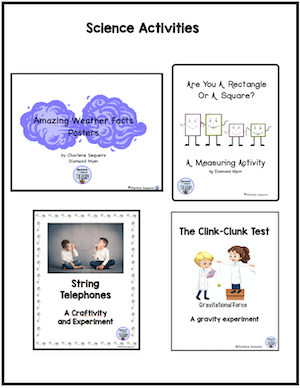







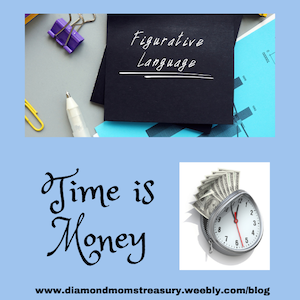




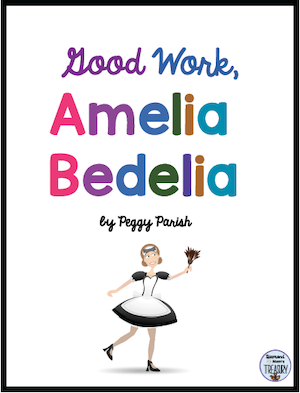

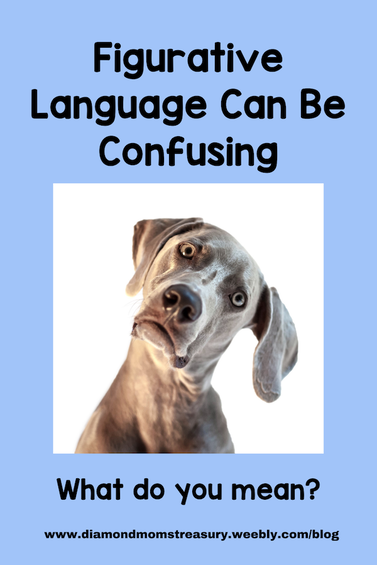











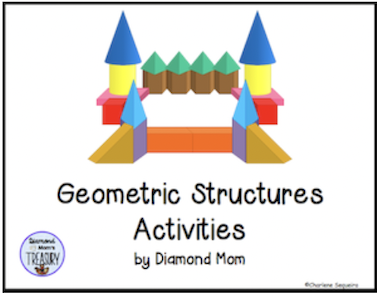
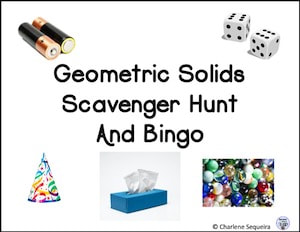

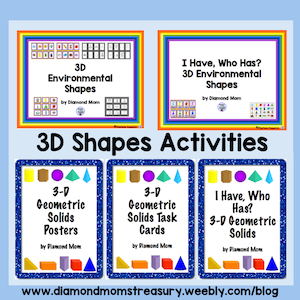











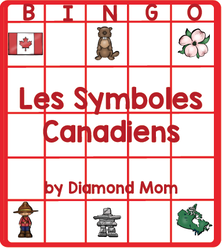



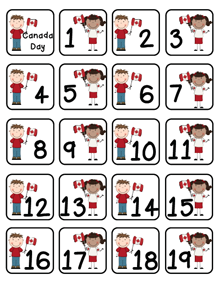







 RSS Feed
RSS Feed